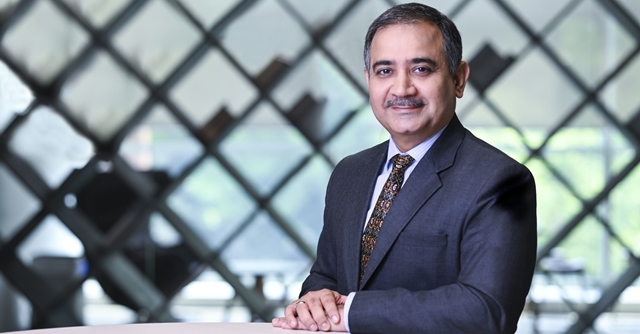
The power of video analytics in enhancing customer experiences


In today’s hyperconnected world, to stay ahead of the curve and evolve, enterprises need to armour themselves with tools like video analytics and similar digital technologies that provide end to end solutions. The video analytics market is expected to grow to $22 billion by 2028, according to a Research and Markets report. The benefits of video analytics are manifold and span across sectors such as 'retail, manufacturing, transportation and smart cities’ to name a few providing comprehensive and insightful data. Aiding this growth in particular is the global retail sector which is undergoing a complete transformation and India is steadily catching up. An EY report, notes that Gen AI could potentially elevate the retail sector’s profitability by 20% and investment in the sector to soar to $31 billion by 2028.
While e-commerce has witnessed phenomenal growth, traditional brick-and-mortar stores continue to hold significant sway. Also, customers now want the convenience of online shopping with the tangible benefits of physical stores. To bring this to fruition, video analytics is a much-needed tool to enhance customer experience. It has the potential to redefine customer experiences and optimise store operations. Today, enterprises are only beginning to realise the potential of video analytics and when powered by AI, the benefits of video analytics are multiple, and can be implemented across various business sizes.
In the retail sector for example, the future is closer than we think. Consider you enter a store today, you are personally attended to, the store’s Wi-Fi sends you a list of products that are on sale/discount, you are spoilt for choice and have an array of products to choose from. All of this is possible through a seamless digital fabric that enables the customer journey end to end and exhibits how technology has evolved. At the core of all this is the IoT Fabric - where it analyses a number of things and curates a personalised shopping experience

Elevating in-store experience and streamlining backend operations
According to PwC, 60% of shoppers prioritise convenience over price. Video analytics offers a deeper understanding of customer behaviour and preferences. Through advanced algorithms and the integration of video management systems with edge computing, retailers gain additional insights such as customer reactions to a particular type of product, advertisements, insights driven from shopping patterns to detecting the specific products customers pick followed by their subsequent facial reactions. This intelligence empowers businesses to streamline operations, optimise workflows and facilitate real-time interventions, even in remote locations, thereby enhancing overall shopping experience. By optimising staffing based on peak shopping hours, retailers can reduce wait times and improve customer satisfaction. Additionally, analysing customer dwell times in different store sections helps identify popular products and optimise product placement for better navigation and increased sales.
The implementation of "smart shelves" equipped with sensors takes this concept further. Smart shelves track availability real time, enabling efficient inventory management. Recognising the challenges of human decision-making and attention span, video analytics can even enhance safety and security. The need for improved security and safety has been a key driver for the rise of video analytics solutions, providing automated monitoring that safeguards customers and staff while ensuring safety compliance standards.

Hence it is evident that video analytics not only enhances customer experiences but also optimises cost and makes backend offerings more efficient by weaving various digital information threads across camera infrastructure, video management systems, cloud and edge computing, video analytics and existing enterprise applications to create a robust visual IoT fabric.
Video analytics can further revolutionise backend operations by integrating with the existing CCTV infrastructure. Retailers can automate the detection of abandoned carts or identify when cash counters are unmanned, allowing for timely interventions, creating a smooth shopping experience. Additionally, video analytics empowers retailers to create more engaging and efficient stores, fostering customer loyalty and optimising sales performance.
A leading clothing retailer recently adopted video analytics to improve the overall shopping experience. By analysing shoppers’ behaviour, they discovered that customers often struggled to find specific items during peak hours. The retailer used this data to adjust staff deployment, ensuring more employees were present to assist customers during busy times. As a result, customer satisfaction increased, leading up to 10% boost in sales during peak hours. What stores essentially need are tailored, future-proof solutions with easy integration and an end-to-end managed services across technologies.

While retailers and other business collect data it is vital that they adhere to the Digital Personal Data Protection Act, 2023 and store the data and images accordingly.
It’s time to up the ante
As India continues to shop, integrating video analytics into retail operations has become crucial and retailers have to lead with a data-centric approach to enhance all-round value. As video continues to proliferate across industries, trusted video management and analytics platforms will become a necessity for companies wanting to leverage video to be cheaper, better, and more impactful across segments like retail, financial services, and healthcare. These AI-based solutions provide the insights, scalability, and ease-of-use needed to truly capture the value of the visual medium.

However, given, India’s vast geographical spread and varying levels of internet connectivity, implementing these technologies can impede the adoption of such new technologies. Moreover, a significant portion of the retail workforce lacks the digital literacy required to fully leverage advanced digital tools. Research suggests that 8 out of 10 jobs today require digital literacy and a majority of these are inching towards demanding outright digital fluency in order to truly realise the potential of the technologies available. Overcoming these barriers is essential in today’s hyperconnected world. We need to create a cohesive retail environment that meets modern consumer expectations, driving the nation's retail sector towards global competitiveness.

Praveen Arora
Praveen Arora is VP, and Business Head - IoT at Tata Communications.
